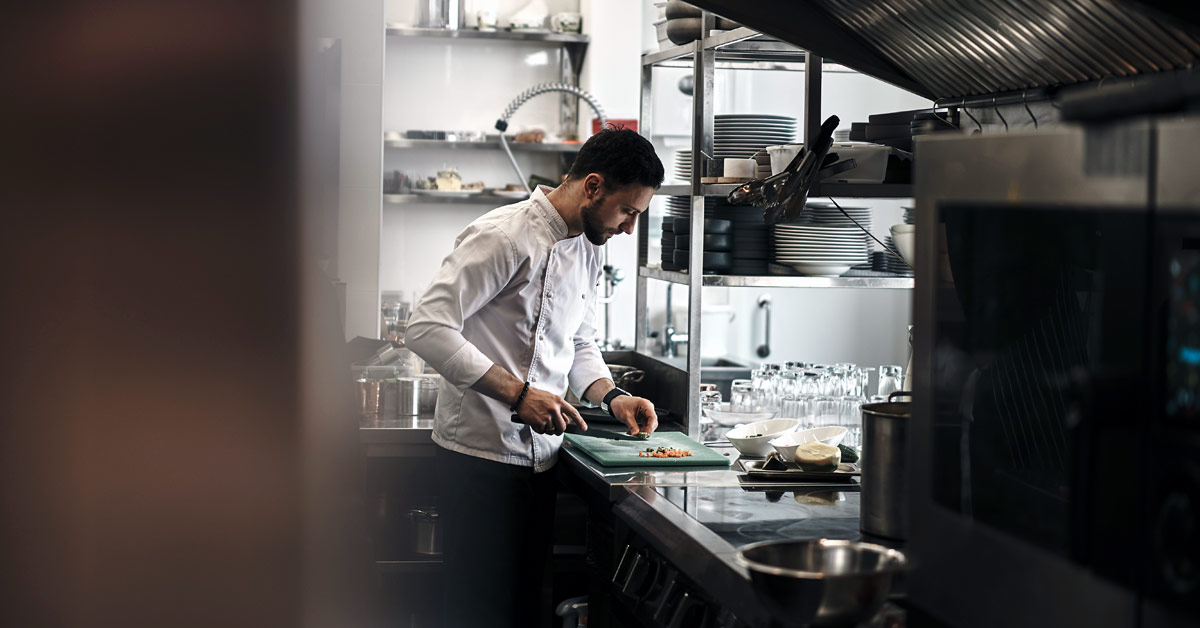What are the food safety risks associated with seafood served in restaurants, and how can best practices be implemented throughout the procurement, handling, and preparation processes?
Last updated: April 17, 2024
Marine delicacies are a prized addition to many culinary establishment menus, offering diverse flavors and nutritional benefits. However, ensuring the safety of sea-based dishes in a restaurant setting is of paramount importance.
Contaminants such as bacteria, viruses, parasites and toxins can compromise the quality of your oceanic cuisine dishes and, more importantly, the health of your customers.
To provide exceptional dining experiences while prioritizing food safety, it is crucial for venues owners and managers to understand the potential hazards and implement best practices.
Understanding the Risks
In a restaurant or hotel, sea-based dishes can be a source of foodborne illnesses if not handled properly. Bacteria like salmonella, shigella, clostridium perfringens, and staphylococcus aureus can infiltrate seafood during various stages of procurement, storage, preparation, and service. Viruses, particularly the norovirus, can also pose a significant threat, with shellfish often linked to viral-related food poisoning cases.
In addition to microbial risks, parasites are a concern. Some fish species, including cod, pollock, and wild salmon, may host parasites known as anisakids, which can cause digestive discomfort and, in some cases, legal liabilities. To mitigate this risk, it is essential to employ proper cooking and freezing techniques.
Best Practices for Restaurants
– Procurement and Inspection
Start by ensuring that your marine delicacies suppliers are reliable and adhere to strict quality standards. Always inspect seafood upon delivery for freshness and proper storage conditions. Fresh fish should be maintained at temperatures between 0 and 2 °C.
– Traceability
Maintain a robust traceability system to track the source and handling of sea based products. This information is critical for quality control and customer safety.
– Hygienic Handling
Train your staff in meticulous sea-based ingredients handling practices. This includes careful evisceration to prevent contamination and the use of dedicated cutting boards and utensils for sea-based dishes. Clean and disinfect these tools thoroughly after each use.
– Frozen Products
If your restaurant serves raw seafood dishes like sushi, adhere to mandatory freezing protocols. Parasites, including anisakids, can be eradicated through freezing at temperatures below -20 °C for at least 24 hours.
Shellfish Specifics
Incorporate shellfish into your menu with caution. Depending on their origin and the season, shellfish may contain various toxins produced by microalgae. Regularly perform chemical analyses to detect these toxins. Do not source shellfish from areas that exceed safety criteria, and stay informed about seasonal variations in toxin levels.
Histamine Formation
Be aware of histamine formation in fish after death. Inadequate handling or temperature control, especially with fatty fish like tuna or mackerel, can lead to histamine-related allergic reactions and digestive issues. Implement rigorous quality control measures in your kitchen.
Marinades
While marinades can enhance the flavor and texture of maritime fare dishes, remember that they do not serve as a method to destroy potential pathogens. Marinades based on oil can reduce the growth of aerobic bacteria but may encourage the growth of anaerobic bacteria like Clostridium. Use marinades thoughtfully, and prioritize oceanic cuisine safety above all else.
Embracing Sustainable Sourcing
Sustainable Sourcing In addition to ensuring food safety, it is vital for restaurants to prioritize sustainable sourcing of sea-based ingredients. By partnering with suppliers who follow responsible fishing practices and support sustainable seafood initiatives, dining establishments can contribute to the preservation of marine ecosystems. This commitment to sustainability not only benefits the environment but also resonates with customers who value ethical and environmentally conscious dining choices.
Prioritizing Allergen Awareness
Allergen Awareness Another crucial aspect of food safety is allergen awareness. Seafood allergies are common, and cross-contamination can have severe consequences for individuals with allergies. Culinary establishments should implement rigorous protocols to prevent cross-contact between sea based ingredients and other ingredients. Separate preparation areas, utensils, and storage spaces should be designated for seafaring edibles to minimize the risk of allergen exposure and ensure a safe dining experience for all customers.
Ongoing Training and Education
Regular training and education to maintain a high level of food standards and hygiene, it is essential for restaurant staff to receive regular training and education on best practices. This includes staying updated on the latest safe food regulations, learning about proper hand hygiene, and understanding the importance of temperature control during storage and cooking. By investing in ongoing training programs, dining venues can empower their staff to prioritize food security and maintain a culture of excellence in their operations.
Collaborating with Health Authorities
Collaborating with Health Authorities Restaurants can further enhance their food safety practices by collaborating with health authorities and participating in inspections and audits. By actively engaging in these processes, culinary establishment owners and managers can gain valuable insights, identify potential areas for improvement, and demonstrate their commitment to upholding the highest standards of safe food practices. This collaboration also helps build trust with customers, who can dine with confidence knowing that the restaurant is subject to regular inspections and holds itself accountable to established guidelines.
Transparent Communication: Building Trust through Information
Transparent Communication with Customers Transparency and open communication are key when it comes to food safety. Dining establishments should provide clear information to customers about their seafood sourcing practices, allergen management protocols, and any additional steps taken to ensure food security. This can be done through menu descriptions, signage, and staff training to address customer inquiries effectively. By fostering an environment of transparency, restaurants can build trust and loyalty among their customer base.
Conclusion
As a restaurant or hotel owner or manager, safeguarding the safety of your customers should always be a top priority. By comprehending the risks associated with seafood and implementing best practices throughout your procurement, handling, and preparation processes, you can provide a dining experience that combines exceptional taste with uncompromising food safety. Prioritize quality, hygiene, and rigorous protocols to ensure that every aquatic fare dish you serve is a testament to your commitment to excellence.
For more information on Aquatic Cuisine Safety issues, we recommend the following resources:
_________________________________________________
Baliseafoodlab – Understand potential risks and ways to reduce safety problems: https://baliseafoodlab.com/seafood-safety-overview/
Global Seafood Alliance – Safe food practices – Responsible Advocate: https://www.globalseafood.org/advocate/topic/food-safety/
World Health Organization – Safe food practices: https://www.who.int/news-room/fact-sheets/detail/food-safety







